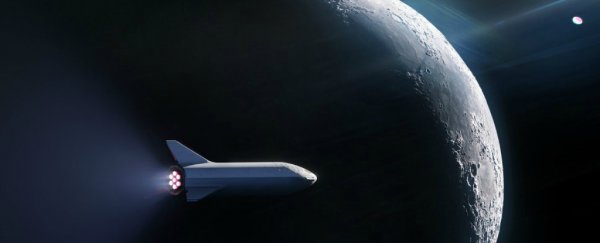SpaceX, the rocket company founded by Elon Musk, plans to launch a private citizen around the moon.
The company's announcement came Thursday night via Twitter, and it included a rendering of the spaceship that will make the voyage: the Big Falcon Rocket, or BFR.
"SpaceX has signed the world's first private passenger to fly around the Moon aboard our BFR launch vehicle," the company said, adding that it will be "an important step toward enabling access for everyday people who dream of travelling to space."
SpaceX also said that it will name the passenger on Monday and explain why that person is making the trip.
However, it's not the first time the company has announced that it would launch a mission to fly around but not land on the moon.
SpaceX to the moon, 2.0
SpaceX previously announced a fly-around-the-moon mission in February 2017.
That plan aimed to launch two private citizens (who are still unnamed) around the moon on a path similar to the one taken by NASA's Apollo 13 astronauts.
It also called for using the company's Falcon Heavy rocket – currently the most powerful operational launch system in the world – and its Crew Dragon capsule, which astronauts are gearing up to fly inside in early 2019.
But SpaceX appears to be deviating from that plan with one less passenger, whom Musk may have hinted is Japanese, and by using BFR, which is still-being-prototyped and as-yet-unproven spacecraft.
The BFR, as Musk described it during a 2017 presentation, calls for a 157-foot-tall spaceship that will ride a 191-foot-tall rocket booster into orbit.
Together, the 35-story system is intended to launch the first crewed missions to Mars – but SpaceX not only appears eager to demonstrate BFRs capabilities, but roll out a new design of the spacecraft.
Musk confirmed the rendering SpaceX shared is a new version of the BFR. Though he gave no more details, the spaceship shown in the image appears to be more squat than the original design.
It also has a large tail fin and two small wings, unlike previously shared graphics.
This article was originally published by Business Insider.
More from Business Insider:
